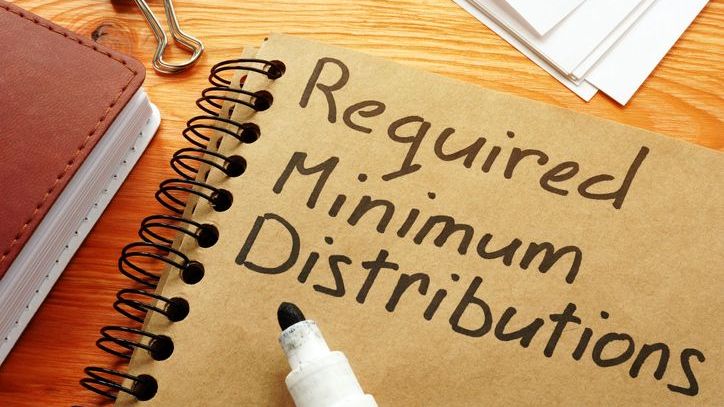You may not be thinking about required minimum distributions (RMDs) throughout your career, but chances are that they’ll be on your mind once you hit your 70s.
RMDs are a critical part of retirement planning. A financial advisor can help you prepare for these mandatory withdrawals, which can have a significant impact on your taxes.
The IRS requires you to begin taking annual withdrawals from traditional IRAs, 401(k)s and other tax-deferred retirement accounts. When you must take your first RMD depends on your age. While RMDs currently begin at age 73, that won’t always be the case. Under the SECURE 2.0 Act, the RMD age is set to increase to 75 in 2033.
About the RMD Age

On the face of it, the mechanics of RMDs are simple: The account holder takes out a certain percentage of the tax-deferred money based on their account balances at the end of the previous year. That amount is divided by the account holder’s life expectancy factor – a number computed by the IRS – to produce the RMD amount.
For example, the IRS life expectancy for a 74-year-old person is 25.5. If their IRA balance was $200,000 on Dec. 31 of the previous year, their RMD amount would be $7,843.
That’s just simple math. When you’re required to take your first RMD, on the other hand, is a little more complicated:
- Those born before July 1, 1949, had to take their first RMD at age 70 ½, which means those folks should already be taking distributions.
- Those born between July 1, 1949 and 1950 had to start their RMDs at age 72, and also should have already done so.
- Anyone born between 1951 and 1959 must take their first RMD by April 1 of the year after they turn 73.
- Anyone born in 1960 or later must take their first RMD by April 1 of the year after they turn 75.
As you can see, the IRS allows you to postpone your first RMD until April 1 of the year after you are required to begin distributions. For anyone born in 1951, their RMDs start this year but they can wait until April 1, 2025, to make the actual withdrawal. After that, each annual withdrawal needs to happen before the end of the year, which means anyone who postpones their first RMD in 2024 will need to make a second withdrawal before the end of 2025.
Keep in mind that a financial advisor can help you build a comprehensive retirement plan, accounting for RMDs as part of it.
Should You Postpone Your First RMD?

This raises the question of whether it’s better to postpone your first RMD. In some cases, it can make sense. If your spouse is still working but plans to retire next year, postponing the first RMD means you might be in a lower tax bracket by April 1 of the following year.
The downside of postponing the first RMD is that taking two distributions in the same year could push you into a higher tax bracket. Two RMDs will also likely increase your combined income and potentially lead to taxes on 85% of your Social Security benefits. A higher income also could increase your Medicare premiums, which are subject to an income-related monthly adjustment amount (IRMAA) surcharge.
However, if you’re going to make a qualified charitable distribution (QCD) with your RMD, you won’t pay any tax on the withdrawal. As a result, you can postpone your first distribution, leaving the money to generate additional gains until you donate it to a charity. And if you end up needing your second RMD for income, you won’t have to deal with the tax impact of two RMDs in one year since your QCD would have been made tax-free.
Whatever your strategy for taking RMDs, it’s important to meet the deadlines. If you don’t take an RMD, you’ll be penalized with a 25% tax on the required amount you didn’t withdraw. If that sounds harsh, just remember that the penalty tax was 50% until the SECURE 2.0 Act was signed in 2022. A financial advisor can help you plan out your RMDs so you can anticipate their tax impact.
Bottom Line
The age to start taking required minimum distributions has changed for many people but you still have the option to postpone your first RMD until April 1 of the year after you’re required to start making withdrawals. Doing so can have either positive or negative tax consequences depending on your broader financial circumstances.
Tips for Managing Your RMDs
- If you’re unsure how much you’ll be required to withdraw, SmartAsset has a special RMD calculator designed specifically to help you estimate how much your mandatory distributions should be.
- A financial advisor can help you plan for RMDs and potentially limit their impact. Finding a financial advisor doesn’t have to be hard. SmartAsset’s free tool matches you with up to three vetted financial advisors who serve your area, and you can have a free introductory call with your advisor matches to decide which one you feel is right for you. If you’re ready to find an advisor who can help you achieve your financial goals, get started now.
Photo credit: ©iStock.com/designed491, ©iStock.com/shapecharge, ©iStock.com/katleho Seisa
Read the full article here














